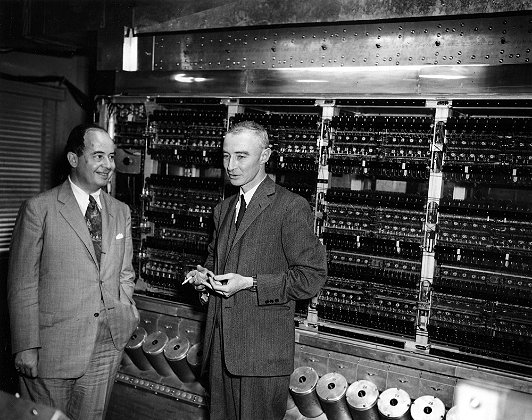Princeton University was a hotbed for nuclear physics research during the early twentieth century. Much of the research conducted at Princeton allowed scientists to develop and pursue a path to building the world’s first atomic device. In fact, more than two dozen Princetonians were among the core group of brains at Los Alamos, N.M.
In the physics department at Princeton there was Eugene Wigner, a pioneer in quantum theory who developed Princeton’s first atom-smashing cyclotron in 1936 to study the nuclear properties of uranium. John von Neumann, another Princtonian, was a brilliant mathematician who used his photgraphic memory to solve unfathomable physics problems. Later during the Manhattan Project, von Neumann showed that the implosion design, which would later be used in the Trinity and Fat Man bombs, was likely faster and more efficient than the gun design. He also created the concept and design of the explosive lenses used in the implosion bombs. Hugh Stott Taylor was a chemist at Princeton and the first man to create pure, radioactive heavy water.

Scientists such as Richard Feynman, Nick Metropolis and John von Neumann paved the way for high-speed scientific computing. In fact, one of the first computers was invented at Princeton to help with calculations for the first hydrogen bomb. The computer, “MANIAC,” ran on only 5 kilobytes of memory.
Albert Einstein, who was living in Princeton, conducted research at the Insitute for Advanced Study and was a source of attraction for other world class physcists who came to the University to discuss theories with him and debate his genius. In 1939, Danish Physicist Niels Bohr travelled to Princeton and met with Einstein to explain that he had bombarded a uranium atom with neutrons, creating barium, splitting the nucleus and creating the theory of atomic fission.
The chairman of the physics department at Princeton, Henry DeWolf Smyth, worked on U-238 separation and also wrote the War Department’s official history of the atomic bomb project.
Princeton, like the Univeristy of Chicago and the University of California at Berkeley, was an essential component of the Manhattan Project’s success.




.jpg)